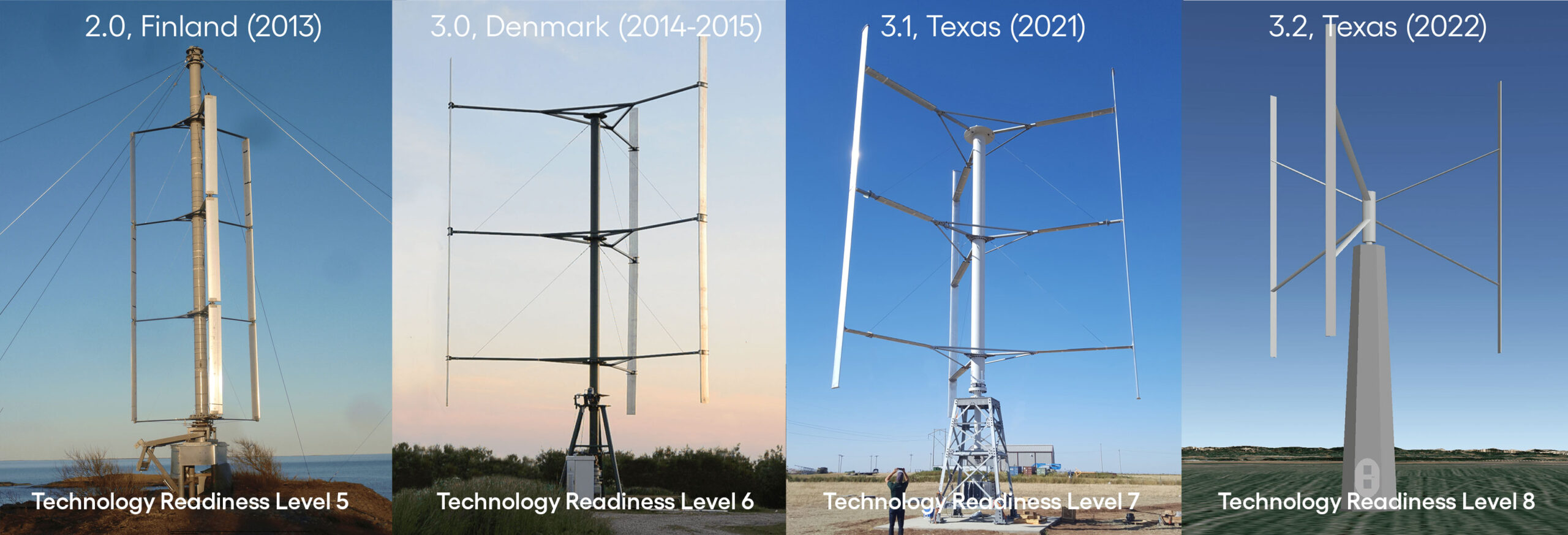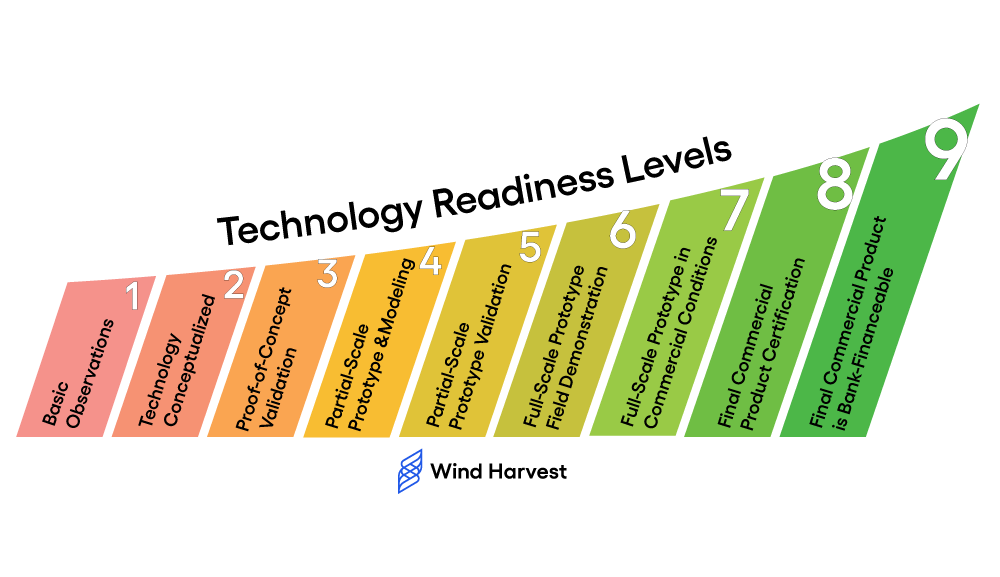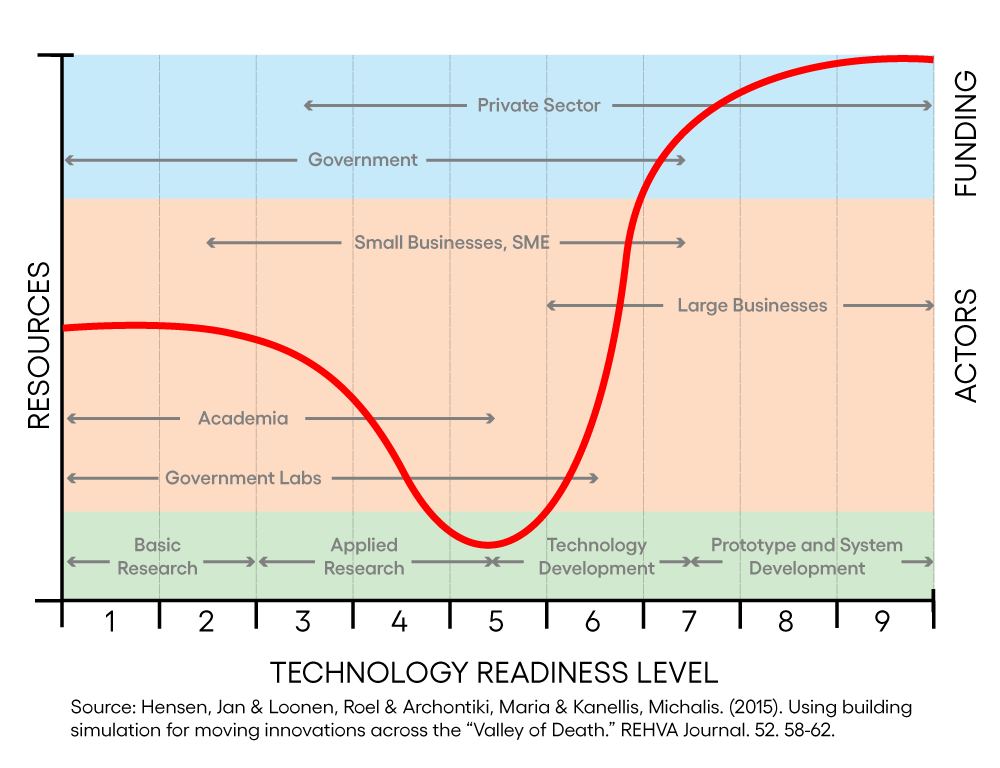Technology Readiness Levels: The Path to Commercialization
Technology Readiness Levels: The Path to Commercialization
Updated 04-29-2023
Wind Harvest is proud to have the first H-type vertical axis wind turbine to achieve Technology Readiness Level (TRL) 7. Data collected from the Wind Harvester 3.1-50kW validated all key predictions from our Eole suite of VAWT aeroelastic engineering models: frequency response (where harmonic resonance will occur); loads (how much lift, load and torque will the turbine experience in different wind conditions); and drag (the drop in efficiency and energy output caused by aerodynamic drag on the blade, blade arms, and fairings).
TRL 7 is the third to last step in the commercialization process. TRL 8, Final Commercial Product Certification, and TRL 9, or Bank-Financeable Product complete the process. We expect our turbines to be fully certified (TRL 8) at the start of 2023. TRL 9 varies by bank. Some will need only a year of O&M data from as few as a half dozen Wind Harvesters. Others will need data from scores of turbines operating for 2+ years.

But what are Technology Readiness Levels?
In the mid-70s, NASA introduced a method of assessing the strength and viability of new technologies with a self-declared definition of merit they called Technology Readiness Levels. Since then, the concept and definition of TRLs have been used, redefined, and adapted to different disciplines and industries to help communicate the progress any given application, system, hardware, or technology has made in its research and development (R&D).
While there are specific definitions for each level published for various industries, as well as more generalized guidelines for engineering or software development, there is yet to be a standardized, specific set of parameters for defining the progress of the R&D for wind turbines. TRLs have become a standard among government entities such as the DoD, U.S. Congress’ General Accountability Office, and the California Energy Commission (CEC).
Note that in the figure below, it is expected that large, well-financed corporations are needed to pass industrial-scale technologies through TRLs 8 and 9. We are happy to say that we have found ways to raise the capital needed to do this without selling our company to a large corporation. We are doing this through our crowdfunding and Series A-4 and B rounds.
Though generalized TRL definitions existed within the fields related to mechanical engineering, none were well-suited to our turbines. So, we adapted the table below from a myriad of TRL definitions for other industries and products.

Wind Harvest’s Model 3.1 has brought us through TRL 6 and to TRL 7, but the prototypes of the past were vital in getting us to this stage. Our Model 2.0 was the first prototype we tested with only 3-blades and brought us to TRL 5. We achieved TRL 4 with the funding and publication by the CEC of the modeling of three Windstar 530Gs prototypes in Palm Springs, CA. The modeling of the data they produced further proved the Coupled Vortex Effect would significantly increase the energy output of closely spaced H-type turbines.
Contact: Jen Hoover, jhoover@windharvest.com
Wind Harvest International, Inc. is a California-based renewable energy technology company, founded in 2006. The company makes, sells, and develops projects for its Wind Harvester brand of H-type turbines, the only known product designed to harvest the highly energetic, turbulent wind that blows 15-80 feet above the ground. Wind Harvest’s wholly-owned financial subsidiary Wind Harvest Pilot Project Inc. raises funds and loans it to the parent company.



